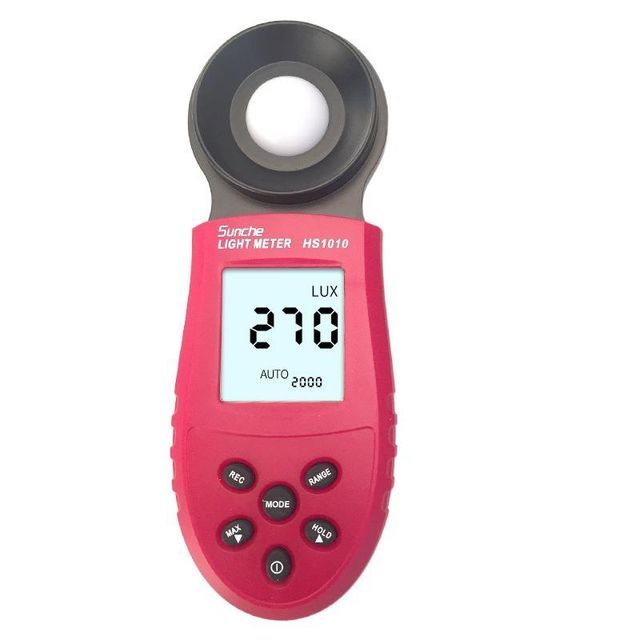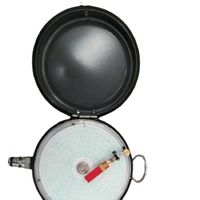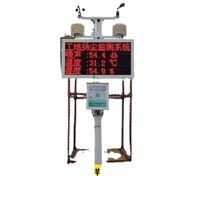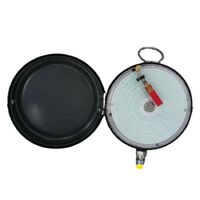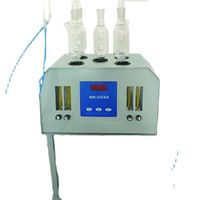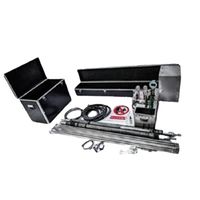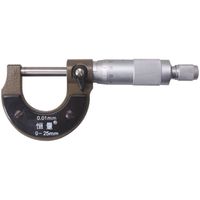HS1010 integrated automatic range digital display electronic photometer handheld illuminance meter wholesale illuminance photometer
-
Supplier: Wenzhou Shengce Instrument Co., Ltd -
Region: zhejiang, China -
Price: $6.00 / 1 - 9 pieces
$5.80 / 10 - 99 pieces
$5.60 / >=100 pieces -
Min. Order: 1 piece
| Place of origin: | Zhejiang, China | Measuring range: | 1-200000 lux |
| type: | digital light meter | payment terms: | L/C, D/A, D/A, wire transfer |
| Model: | HS1010 | order number: | 1010 |
| model: | 1010 | Package preview: | |
| brand: | grand examination | solve: | 0.1 |
| origin: | Zhejiang | brand: | God's guess |
Light meter measurement principle:
Photovoltaic cells are photovoltaic components that directly convert light energy into electrical energy. When light irradiates the surface of the selenium photovoltaic cell, the incident light passes through the metal film 4 and reaches the interface between the semiconductor selenium layer 2 and the metal film 4, producing a photoelectric effect. The magnitude of the potential difference is proportional to the illumination on the light-receiving surface of the photovoltaic cell. At this time, if an external circuit is connected, current will pass through, and the current value will be indicated by yilex (Lx) on the scaled microammeter. The magnitude of the photocurrent depends on the intensity of the incident light and the resistance in the loop. The light meter has a variable speed so it can measure high or low illumination.
How to use the light meter:
1. Turn on the power.
2. Open the photodetector cover and place the photodetector horizontally in the measurement position.
3. Select the appropriate measuring device.
If there is only "1", it means the illumination is too large and you need to press the range key to adjust the measurement multiple.
4. The illuminance meter starts working and displays the illuminance value on the display.
5. Display data is constantly changing. When the displayed data is relatively stable, press the HOLD key (key 8) to lock the data.
6. Read and record the observed value displayed in the reader. The observed value is equal to the number displayed in the readout multiplied by the span value.
For example, the screen displays 500, the lower right corner displays the status "×2000", and the illumination measurement value is 1000000lx, that is (500×2000).
7. Press the lock switch again to cancel the read value lock function.
8. During each observation, read it three times in a row and record it.
9. After each measurement is completed, press the power switch to cut off the power.
10. Replace the photodetector cover and return it to the box.
product information:
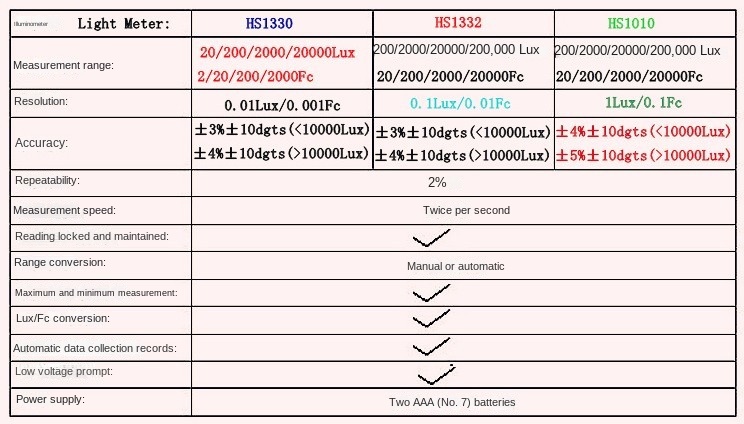
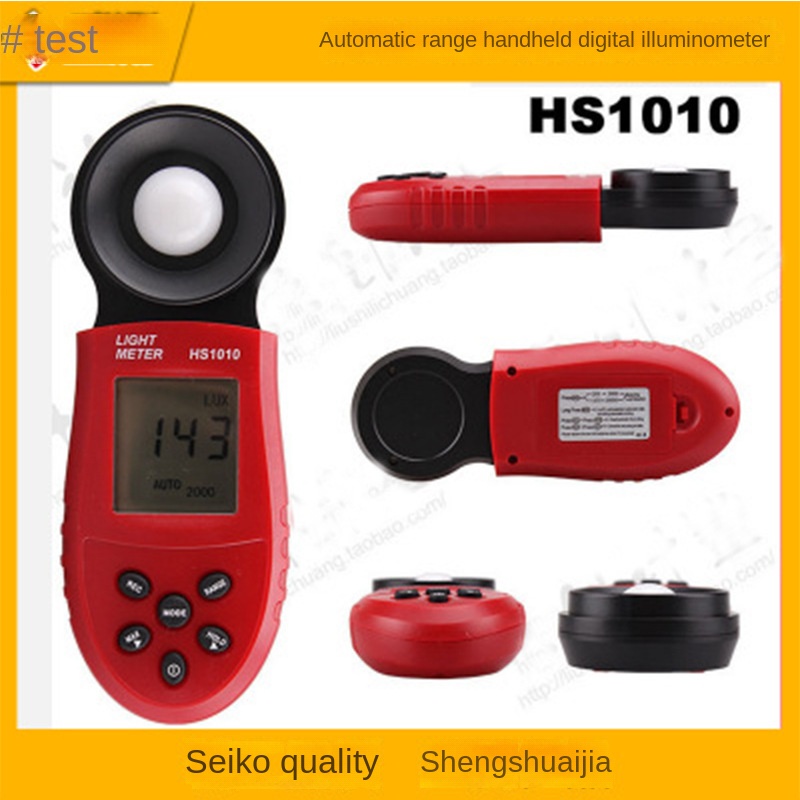
Lighting is closely related to people's lives. Adequate light can prevent people from having accidents. On the contrary, the fatigue caused by too dim light far exceeds the fatigue of the eyes themselves. Therefore, discomfort or poor lighting conditions are one of the main causes of accidents and fatigue. Existing statistics show that about 30% are caused directly or indirectly by insufficient light. The lighting requirements for venues (pavilions) are very strict. Too strong or too dark light will affect the game effect.
So, what are the hygiene requirements for indoor illumination where people live? Illumination is a very important indicator in terms of hygiene. Light refers to electromagnetic radiation that can make human eyes feel bright. The perception produced when light enters the eye is called vision. The light that people see refers to visible light, whose wavelength range is 380~760nm (nanometer).
Currently, lighting can be divided into natural light sources and artificial light sources. Natural lighting refers to the natural illumination of indoor and regional areas, including direct sunlight scattered light and reflected light from surrounding objects. It is usually expressed by lighting coefficient and natural illumination. The lighting coefficient refers to the ratio of the effective area of the lighting opening to the indoor floor area. The lighting coefficient of general residences is between 1/5 and 1/15, and the living area ratio is between 1/8 and 1/10 (window area/indoor building area). The natural illumination coefficient is used to evaluate the illumination level of natural light. It reflects the relationship between indoor and outdoor lighting. It also reflects the local light climate (the sum of natural light energy and the climate's daylight illuminance indicator).
In order to ensure that people live under suitable light, our country has formulated health standards for indoor (including public places) lighting. For example, the hygiene standard of illumination in shopping malls (stores) in public places is ≥100Lx; the hygiene standard of countertop illumination in libraries, museums, art galleries, and exhibition halls is ≥100Lx; the hygiene standard of illumination in public restrooms is ≥50Lx; bathrooms (showers, swimming pools, basin baths) ≥30Lx, Sauna ≥30Lx. Foreign standards for indoor illumination, for example, Germany recommends several rated light intensities. Offices including document work areas are as follows: 300Lx, and typing and drawing work are 750Lx; In factories, the illumination requirement for visual work on production lines is 1000Lx; Hotels and public rooms 200Lx; reception points and cash registers are both 200Lx; shop windows are 1500~2000Lx; hospital wards are 150~200Lx, first aid areas are 500Lx; schools and classrooms are 400~700Lx; canteens and indoor gyms are both 300Lx, etc.
For the measurement method of illumination, a light meter is generally used for measurement. Illuminance meters can measure the intensity of different wavelengths (such as measurements in the visible light band and ultraviolet band) and can provide people with accurate measurement results.
In short, illumination is of extremely important health significance to human health, especially eye care.

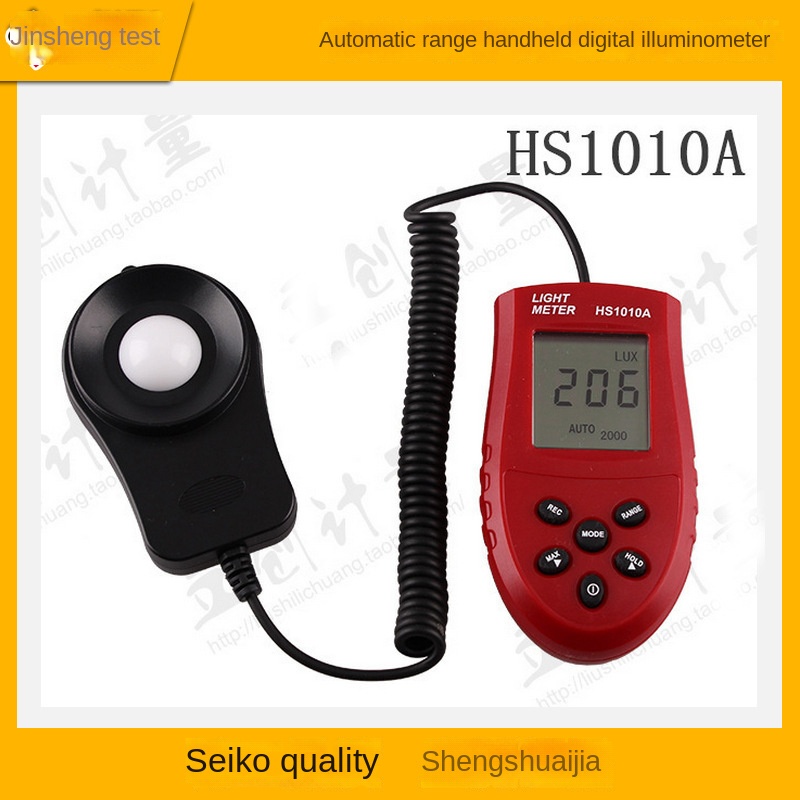
Packaging materials: 72 pieces/carton in one piece, outer box size: 42*55*60CM, gross weight 16KG, net weight 15.5KG
60 pieces/carton, outer box size: 57*43*60CM, gross weight: 17KG, net weight: 16.3KG
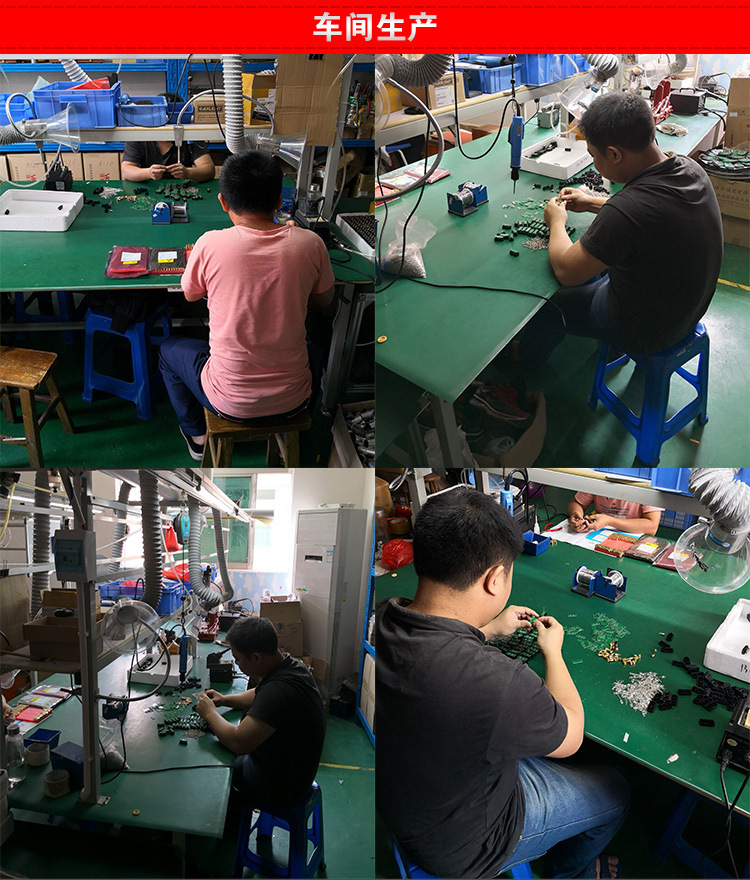
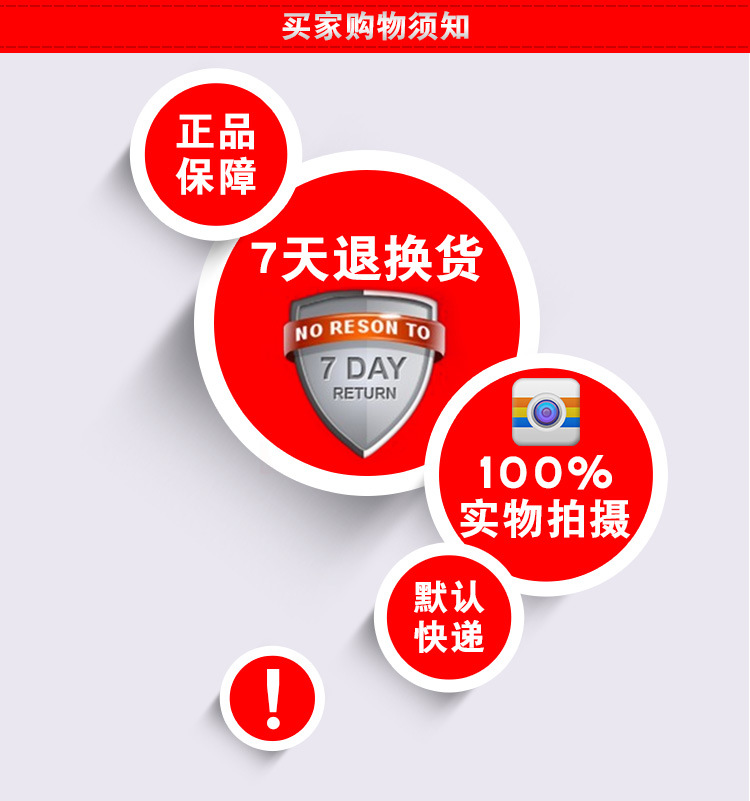
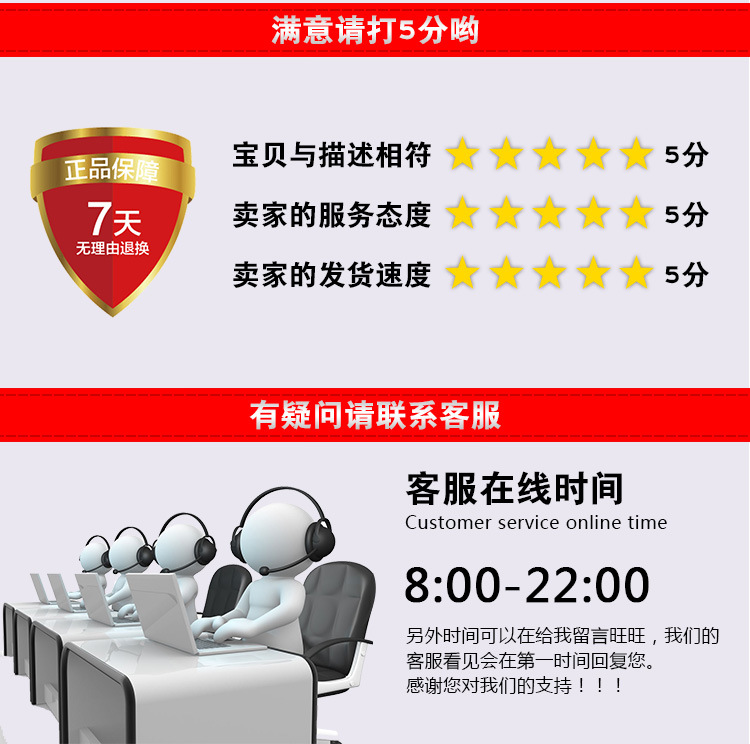
-
Newly launched pressure chart recorder YTL-130 mechanical energy

-
Best-selling product construction site dust air noise monitoring surveillance video overlay system

-
New Arrival Meter Manufacturers Supply Circle Chart Pressure Recorder Machinery

-
Hot Sales ZLXJ-05G High Chlorine COD Dissolving Microwave Denitrification

-
Hot Sales Laixin Coal Coal Team Gas Pressure Multipurpose Tester

Other Products
-
 $3.20 - $3.80 / piece
$3.20 - $3.80 / piece

